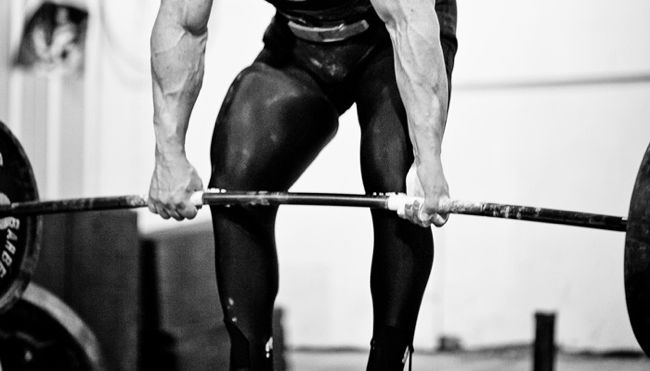
Like many of you, I’ve been on a life long quest to increase my deadlift, usually to be met with frustration. After 25 years of competitive lifting, I’ve picked up a few things I’d like to pass on in the hopes that it can help you move this most difficult lift upward.
Throughout my lifting career, I’ve had the great fortune to train with some very good deadlifters, including multiple WPO champ Paul Childress of multiple 800-lb plus deadlifts and my good friends, Steve Coppola and Matt Ladewski, both many time 700-lb plus pullers. In sharing training time with these exceptional pullers as well as many others, I’ve observed some common factors in those who pull well and pull well consistently over long periods of time.
The number one thing I’ve noticed is that most big pullers train their deadlifts using both a conventional stance and a sumo stance, regardless of what style they use in a meet. Although Paul Childress is a big sumo puller, he always did many conventional deadlifts when I trained with him. From what he tells me, he still does. It’s up to you to decide how to incorporate this into your training. If sumo is your main style, try to pull conventional at least once every three sessions. If you do speed deadlifts, try to pull the opposite style every other session. Nonetheless, increasing one style will help raise the other style.
Another thing I’ve noticed is that good deadlifters vary the types of deadlifts they use in training. Perform rack pulls, vary your bar heights, try standing on some raised boards or mats, or utilize bands. Perform reverse band deadlifts or quadruple the bands around the bar and your rack and pull your rack deadlifts against some band tension. Again, all these types of deadlifts can be performed either sumo or conventional, so achieve records for everything. The more types of deadlifts you train, the more areas of the deadlift you hit in training so try some new things.
Evaluate your technique. A technique you use over a long period of time may become stale for you after awhile. If you’ve pulled sumo for a long time, you may want to try conventional as your main style. This doesn’t mean that you should stop pulling sumo, but gear your contest training efforts and equipment toward your new style. Also, even if you decide to stay with a certain technique, evaluate the little things such as foot placement, grip, and head position.
The hook grip is a technique that gets talked about a lot. I’ve played around with it and decided it wasn’t for me, but Steve Coppola made the conversion and continues to push his deadlift even higher. Like anything else, learn about it and give it a try. It may be just the thing you’re searching for to push a stalled deadlift up.
You also need to find other movements to push up your deadlift besides deadlifting. If you follow the conjugate method, you’ll use other lifts such as squats with different bars off boxes at varying heights as well as many types of good mornings. I think you can deadlift too much. You’ll burn out on it and may develop an uneven pull, meaning there are muscle groups that won't get developed merely by deadlifting alone. This leads to sticking points and weaknesses. These weaknesses can be remedied by performing squats or good mornings with special bars such as the safety squat bar or giant cambered bar.
Here’s a quick tip on good mornings from a famous powerlifter — “It isn’t so important to raise your good morning as it is to raise your deadlift by doing good mornings.” What I get out of that is it’s important to get stronger on your good mornings, but it’s much more important to get your deadlift stronger by doing them correctly and productively. There aren’t any contests for good mornings!
The last thing is rest. Know when it’s time to back off. Over time, you’ll discover how long or how frequently you can pull hard. For some, this may be every other week while for others it could be two weeks in a row. Some might even be able to go for three weeks. Know when to back off. Schedule a light day or a day for low box squats with a special bar. Whatever it is, get a feel for your training and how to organize it for your best deadlifting results.
There you have it. I hope some of the things I’ve mentioned can help you or at least get you thinking. The deadlift is the hardest lift for me, and I’m still striving to make gains. While a suit or shirt may help your squat and bench tremendously, your brain may be your biggest ally for the deadlift, so think hard and pull big!










1 Comment